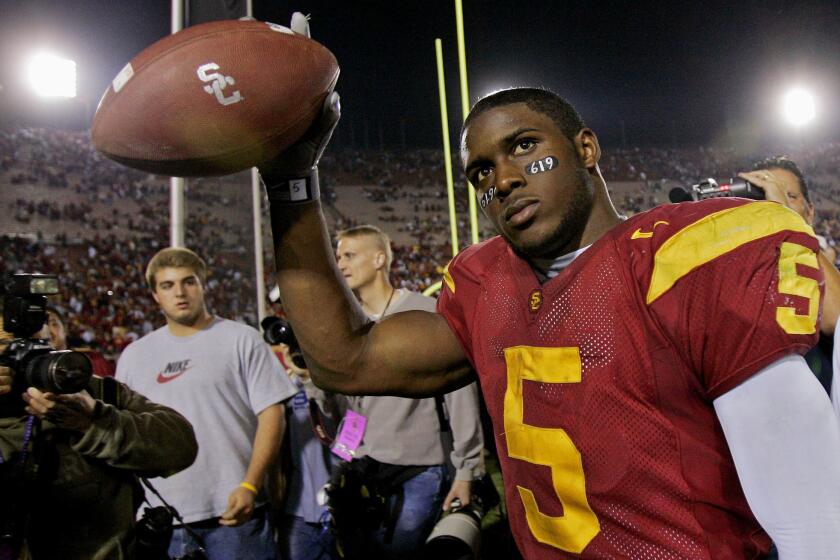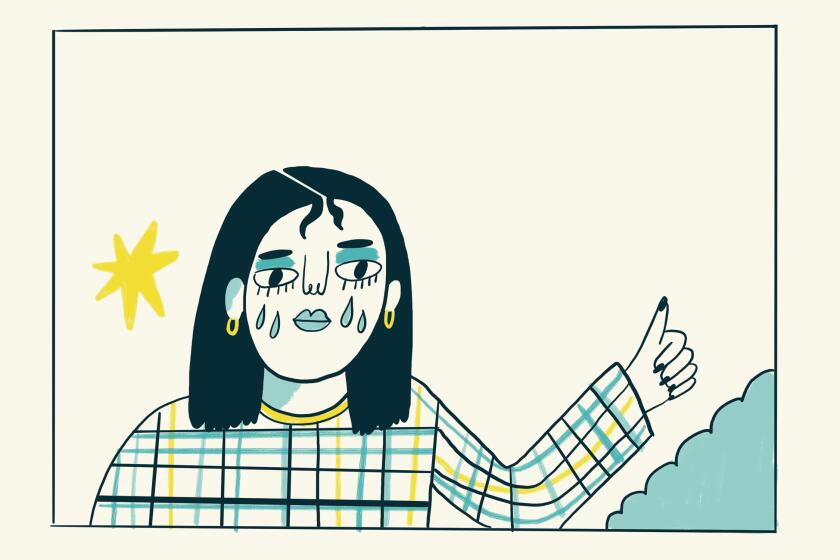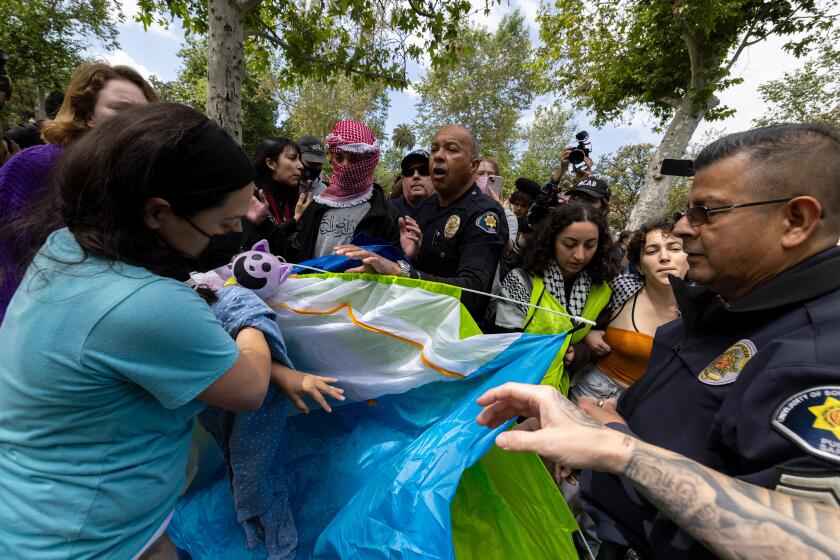Occupy’s deep L.A. roots
Shortly before Occupy L.A. was evicted from the City Hall grounds, I noticed a sign at the corner of Spring and Temple. It was a large white cloth with big block letters stenciled in black that read: “TIERRA Y LIBERTAD,” or “Land and Liberty.” The slogan had traveled a long way through time to arrive at what the Occupiers called Solidarity Park. The words are most often associated with Emiliano Zapata, the great revolutionary leader from Morelos, Mexico, whose radical vision of land reform ended with his assassination. But the slogan also has deep roots in Los Angeles history.
There are many similarities between the Los Angeles of today and the city as it was in the second decade of the 20th century. The progressive era was at its peak, and L.A. was viewed as one of the “reddest” cities in America. In the mayoral election of 1913, Job Harriman, a Christian minister turned socialist agnostic, came within several hundred votes of winning. (Harriman had run for vice president on Eugene Debs’ Social Democratic Party ticket in 1900.)
But it wasn’t easy being a radical in L.A. back then. As William Estrada, curator of California and American history at the Natural History Museum of Los Angeles County tells it in his definitive history “The Los Angeles Plaza,” in 1909 the City Council audaciously banned free speech within city limits — except in the old plaza, at the city’s historic center near Olvera Street.
Still, the radicals of the day made the most of their allotted space. From two concrete platforms, orators railed against monopolies and for better wages and worker solidarity. At the Italian Hall just down the street, Wobblies and anarchists wrangled over their manifestoes. Among them was a young Mexican activist named Ricardo Flores Magón, who’d been forced to flee to the United States because of his agitation against Mexico’s dictator, Porfirio Díaz. He started out a liberal reformer but was radicalized by the people he encountered in exile, including the legendary anarchist Emma Goldman, who was a frequent visitor to L.A. Near the plaza, Flores Magón plotted revolution for his homeland and brilliantly honed his vision down to two nouns and a conjunction: Tierra y Libertad.
The scene Magón joined in Los Angeles was an early 20th century version of the Occupy movement. There were raucous rallies at the plaza, festive fundraisers at the Italian Hall and plenty of run-ins with the LAPD. Trials of the radicals were heavily covered by The Times, whose general manager, Harrison Gray Otis, seethed against anarchists in general, whom he blamed for the 1910 bombing of The Times Building, and against Flores Magón in particular. Otis owned upward of a million acres of land across the border in Baja California, and an armed contingent of “Magonistas” associated with Flores Magón’s Partido Liberal Mexicano briefly took control of Tijuana and other parts of Baja in 1911.
After serving several years in federal prison for violating neutrality laws that forbade involvement in the revolutionary cause south of the border, Flores Magón gathered his followers in Los Angeles to begin a less public but no less utopian “occupation.” They founded an anarchist commune in what was then called Edendale, at the north end of the Silver Lake reservoir. Renting a five-acre parcel and living in wood shacks, they enacted equitable gender roles and attempted sustainable agriculture.
While he lived on the commune, Flores-Magón penned his masterpiece of radical political theater — “Tierra y Libertad,” a melodrama befitting its era, rife with villainous land owners and heroic campesinos. Rehearsals took place in Edendale and everyone got a part; some 50 players in all performed the play at a theater downtown.
No commune lasts forever, and after barely eight months, an LAPD raid ended the experiment at Edendale. Miraculously, the “Tierra y Libertad” script was rescued by one of the Magonistas, and the play enjoyed several productions throughout the Southwest during the Mexican revolution and beyond.
After his arrest, Flores Magón was convicted on charges of sedition and sentenced to 20 years in federal prison. He died at Leavenworth at the age of 49. In Mexico, he is revered as the “precursor” of the revolution, with a boulevard bearing his name and a grave at the Rotunda de Personas Ilustres (the thought of which would surely have enraged the anarchist). The story of Flores Magón — a political epic by any measure — is not widely known in the United States. But in Los Angeles, his influence lived on across the decades in bohemian cafes and in the living rooms of activists from Echo Park to Watts.
There was more than a century’s worth of history on that “TIERRA Y LIBERTAD” banner at Solidarity Park. We all knew the occupation couldn’t last forever, but just as its dispersal was predestined, so is its resurrection.
Rubén Martínez is a professor of writing and literature at Loyola Marymount University and the author, most recently, of the forthcoming “Desert America.”
More to Read
A cure for the common opinion
Get thought-provoking perspectives with our weekly newsletter.
You may occasionally receive promotional content from the Los Angeles Times.






